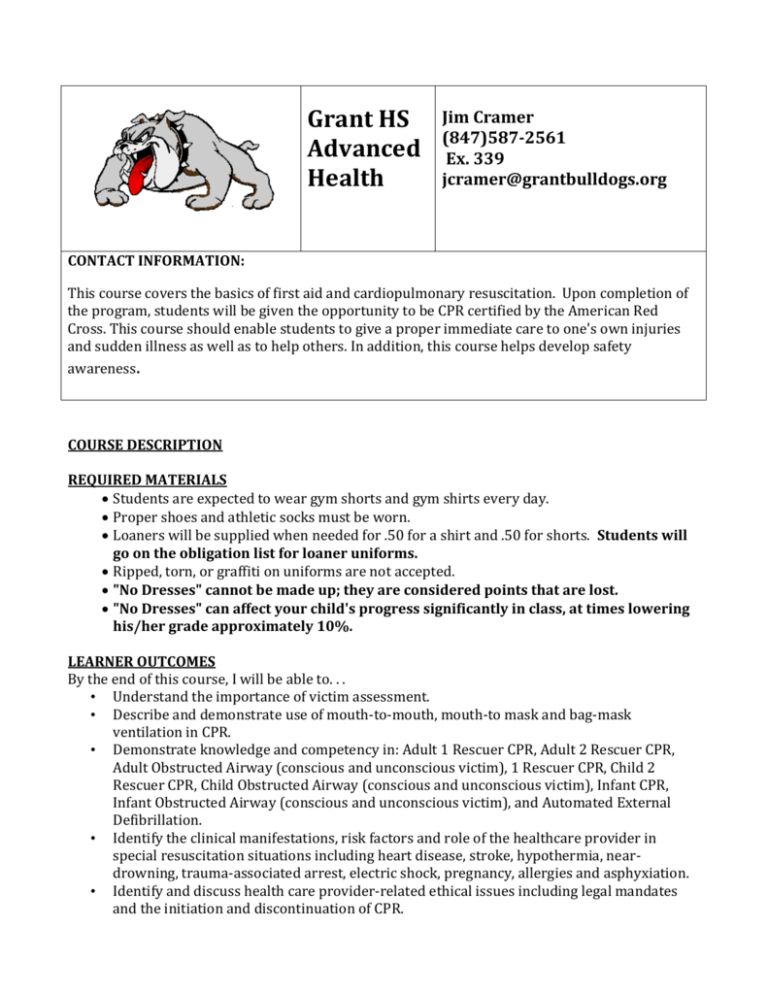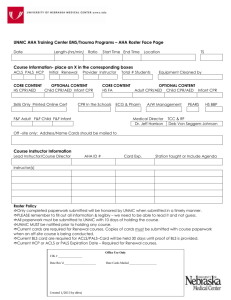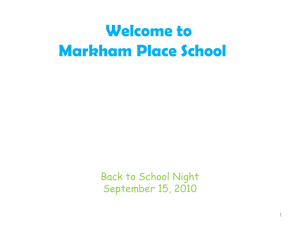Advanced Health - Grant Community High School
advertisement

Grant HS Advanced Health Jim Cramer (847)587-2561 Ex. 339 jcramer@grantbulldogs.org CONTACT INFORMATION: This course covers the basics of first aid and cardiopulmonary resuscitation. Upon completion of the program, students will be given the opportunity to be CPR certified by the American Red Cross. This course should enable students to give a proper immediate care to one's own injuries and sudden illness as well as to help others. In addition, this course helps develop safety awareness. COURSE DESCRIPTION REQUIRED MATERIALS Students are expected to wear gym shorts and gym shirts every day. Proper shoes and athletic socks must be worn. Loaners will be supplied when needed for .50 for a shirt and .50 for shorts. Students will go on the obligation list for loaner uniforms. Ripped, torn, or graffiti on uniforms are not accepted. "No Dresses" cannot be made up; they are considered points that are lost. "No Dresses" can affect your child's progress significantly in class, at times lowering his/her grade approximately 10%. LEARNER OUTCOMES By the end of this course, I will be able to. . . • Understand the importance of victim assessment. • Describe and demonstrate use of mouth-to-mouth, mouth-to mask and bag-mask ventilation in CPR. • Demonstrate knowledge and competency in: Adult 1 Rescuer CPR, Adult 2 Rescuer CPR, Adult Obstructed Airway (conscious and unconscious victim), 1 Rescuer CPR, Child 2 Rescuer CPR, Child Obstructed Airway (conscious and unconscious victim), Infant CPR, Infant Obstructed Airway (conscious and unconscious victim), and Automated External Defibrillation. • Identify the clinical manifestations, risk factors and role of the healthcare provider in special resuscitation situations including heart disease, stroke, hypothermia, neardrowning, trauma-associated arrest, electric shock, pregnancy, allergies and asphyxiation. • Identify and discuss health care provider-related ethical issues including legal mandates and the initiation and discontinuation of CPR. • • • • • Describe the signs of 4 common life-threatening emergencies. Describe the requirements for obtaining certification and demonstrating continuing competency for the Healthcare Provider. Acquire movement skills and understand concepts needed to engage in health-enhancing physical activity Achieve and maintain a health-enhancing level of physical fitness based upon continual self-assessment. Understand principles of health promotion and the prevention and treatment of illness and injury. . GRADE CATEGORIES CPR Skill Testing 10% Cardiovascular 10% Class work 10% Fitness 10% Quizzes 10% Assignments 10% Participation 20% Tests 20% GRADING SCALE 100% to 90% = A 89% to 80% = B 79% to 70% = C 69% to 60% = D 59% or lower = F REQUEST FOR ABSENT WORK Students will be allowed to make up any absence including field trips or school sponsored trips. They will have 1 week from the day they return to school to make-up. Absences can be made up during Physical Education Classes throughout the school day. Non-participation (no dresses) and deduction of points cannot be made up. Students must receive a pass from their teacher to be excused from a study hall. ACADEMIC INTEGRITY All students are expected to submit their own individual work. Any student that engages in copying homework, cheating on quizzes or tests or plagiarism will be given a grade of zero on that assignment. No make-up work will be given to raise a student’s grade due to academic dishonesty. STUDENT BEHAVIOR In addition to all Grant High School rules outlined in the Student Handbook, students are expected to: G – Get to class on time and prepared. R – Respect yourself and others. A – Actively participate. N – Never give less than your best. T – Take responsibility. Course Outline Week Week 1 Reading Syllabus Ch.1 Week 3 Topic Syllabus, CPR in the Healthcare Setting, Chain of Survival, Heart Attack & Stroke Health Precautions and Guidelines Methods of ventilation, Adult 1 Rescuer and 2 Rescuer CPR Checking the Victim Practice and Check Off: Adult 1 Rescuer and 2 Rescuer CPR (with mask and bag-mask ventilation. Skill testing Week 4 Foreign Body Airway Obstruction in the Conscious and Unconscious Adult Ch. 2 Week 5 Practice and Check Off: Foreign Body Airway Obstruction in the Adult (Conscious and Unconscious victim) Automatic Electrical Defibrillator and Special Situations Ch. 3 & 6 Week 2 Week 6 Week 7 Week 8 Week 9 Week 10 Practice and Check Off: Using the AED in the Adult and Special Situations Midterm Examination Remedial and Retesting Labs (as needed) Pediatric Safety and Prevention of Injuries Complete Safety Check Sheet about a site of your choice. Substance Misuse and Abuse Pediatric Basic Life Support: Infant CPR, and Infant FBAO Practice and Check off: Infant CPR and (Conscious and Unconscious) Child CPR (Conscious and Unconscious) Practice and Check off: Child CPR (Conscious and Unconscious) Safety, Ethical and Legal Issues in CPR in/out of the Healthcare Setting Final Examination and Course Evaluations Certification The opportunity exists for CPR certification and FIRST AID certification. To get the certification the student must get the grade of B or 80% on CPR Written Final, First Aid Written Final, CPR Practical Final, and Splinting Practical Final. Medical Excuses Students with a special medical excuse written by a doctor and not your parent (PARENT NOTES ARE ONLY ACCEPTABLE FOR ONE DAY) will be honored only when there are specific dates written on the excuse stating how long the student will be out of class. (Unacceptable: "until further notice") Your teacher will designate written assignments for students on a medical for less than 6 weeks. Further specific course information is available on the Addendum for this class. Ch. 2 Ch. 4 Ch. 5 Ch 5 Ch. 7-8






